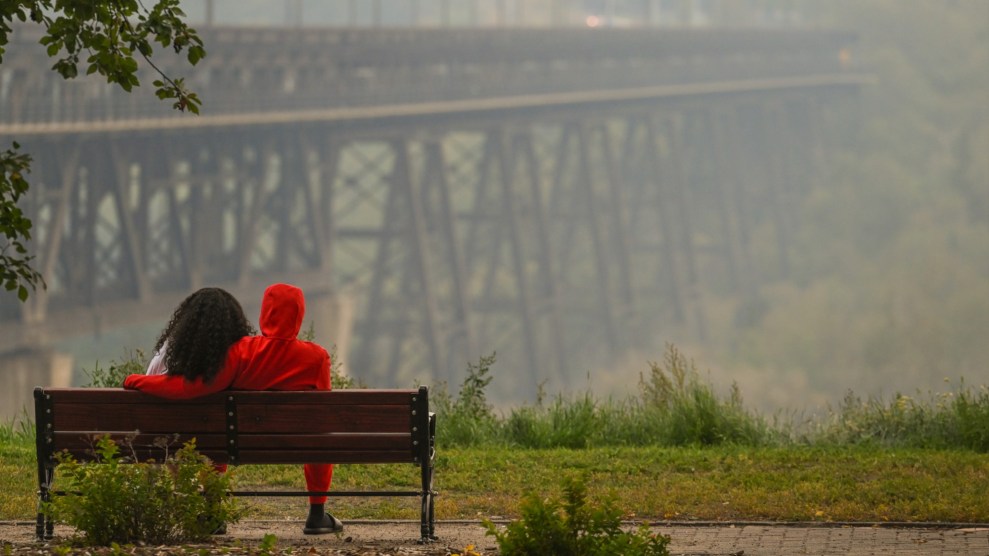
New York City during the 2023 Canadian wildfiresRyan Rahman/Pacific Press/Zuma
This story was originally published by High Country News and is reproduced here as part of the Climate Desk collaboration.
By 2054, parts of California, including Fresno and Tulare, could experience as many as 90 days of poor air quality—about three months’ worth—in a bad year. Areas of Washington and Oregon could see up to a month of it.
That’s according to a new analysis from First Street, a nonprofit that assesses climate risks nationwide. First Street’s air quality model forecasts the number of bad air days—days with a level of over 100 on the air quality index—that communities will experience this year and as far as 30 years into the future, something that could have a significant impact on public health.
The data is readily accessible through First Street’s Risk Factor tool, which rates individual properties’ risk for flooding, wildfire, wind, heat—and, as of this week, poor air quality.
Users can type any US address into Risk Factor to see the property’s risk, on a scale of 1 to 10, for each of the five climate-related effects. For air quality, users will see the average number of bad air days they could experience in any given year, now and into the future. (House hunters can also find Risk Factor’s data within the Redfin real estate app.)
In the Western US, First Street found that the number of orange air days has risen by almost 500 percent over the past two decades. “Somewhere between 2010 and 2016, we started to see increases in pollution for the first time in almost 80 years,” said Jeremy Porter, the head of climate implications research at First Street. “It can be connected directly back to the increased intensity and frequency of wildfires, and especially in the West.”
Going forward, the nonprofit predicts that the West will continue to have the worst air quality in the country, with California, Oregon, Washington and Idaho seeing the greatest increase in bad air days.
First Street’s air quality model, which is based on the organization’s own wildfire and heat risk models, as well as on peer-reviewed studies and Environmental Protection Agency data, took almost two years to complete.
Vijay Limaye, a climate and health scientist at the Natural Resources Defense Council, who was not involved in the project, said First Street’s methodology looked strong. “I have a lot of confidence in the maps and the data and the overall assessment that’s put forward in the report,” he said.
Though a few days or a week of additional bad air may not seem like much, research suggests that even incremental increases in pollution can have a negative impact on public health, especially over time.
“It may not sound like a big deal,” Limaye said. “Unfortunately, there’s no safe level of exposure.” Just a few hours spent in bad air, he said, can be “really hazardous” to human health.
Compared to pollution in the past, which the US successfully tackled through emission restrictions on automobiles and factories, the pollution of the future is a lot more complicated and will be much harder to address.
Overall, Limaye believes the solution lies in focusing on the issue’s underlying driver: climate change. For the average person, he said, “being engaged in climate policy and voting—and thinking about how that shapes our well-being and that of our families and people we care about—is really paramount.”
Day to day, Limaye said it’s important to check AirNow for updates. And, whenever air quality is poor, he urged people to follow guidelines, including staying indoors as much as possible, using air filters and wearing N95 masks outside.
“We really need to be doing all that we can to get the word out about the severe health risks of wildfire smoke,” Limaye said. “Because, as this report shows, this problem is not going away.”















